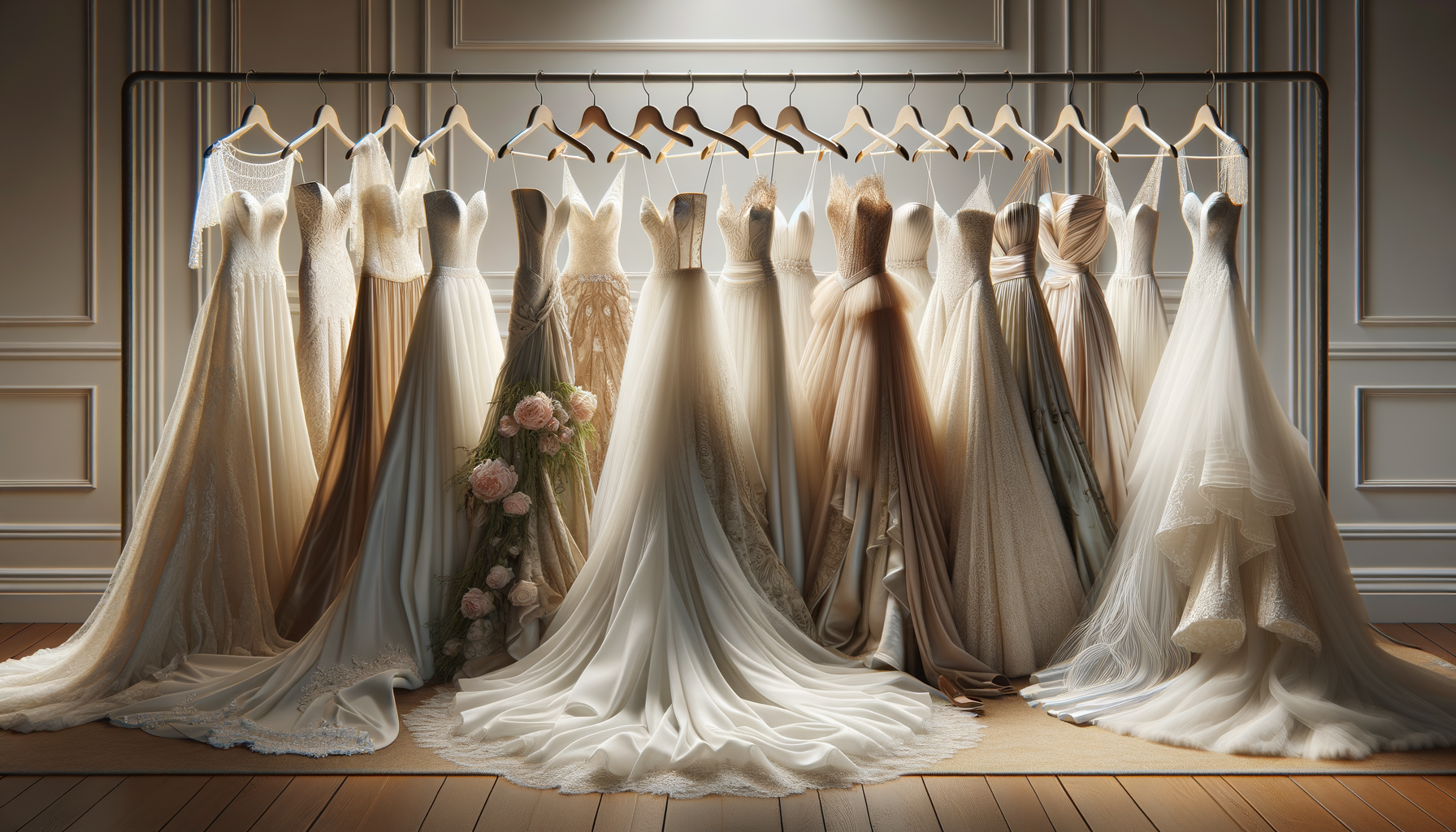Understanding Silhouettes: The Foundation of Bridal Fashion
The silhouette of a wedding gown is its overall shape, and it plays a crucial role in defining the bride’s look. From the classic A-line to the dramatic ball gown, each silhouette offers a distinct style and feel. The A-line is versatile, flattering most body types with its fitted bodice and gradually widening skirt. On the other hand, the ball gown embodies fairy-tale charm with its full skirt, ideal for formal weddings. For brides seeking a more modern look, the mermaid silhouette offers a fitted style that hugs the body, flaring out at the knees, perfect for showcasing curves.
When choosing a silhouette, consider the venue and theme of your wedding. A beach ceremony might call for a lightweight sheath dress, while a grand ballroom would complement a regal ball gown. Understanding the different silhouettes helps brides narrow down their options, making the selection process less overwhelming.
Fabric Choices: The Texture and Feel of Your Gown
The fabric of a wedding dress not only affects its appearance but also its comfort and wearability. Popular options include satin, known for its smooth finish and sheen, and lace, which adds a touch of romance and elegance. Tulle is often used for creating volume, especially in ball gowns, whereas chiffon offers a lighter, more ethereal look, perfect for outdoor settings.
Consider the season and location of your wedding when selecting fabric. Heavier fabrics like satin and taffeta are suitable for cooler climates, while lighter fabrics such as organza and chiffon are ideal for warmer weather. The choice of fabric can significantly influence the overall aesthetic and comfort of the gown.
Necklines and Sleeves: Framing Your Face and Shoulders
The neckline and sleeves of a wedding dress can dramatically alter its style, enhancing the bride’s features. Common necklines include the sweetheart, which mimics the shape of a heart and accentuates the décolletage, and the V-neck, which elongates the neck and adds a touch of sophistication. High necklines offer a modest yet elegant look, suitable for traditional ceremonies.
Sleeve choices range from strapless and spaghetti straps to long sleeves, each offering a different level of coverage and style. Long sleeves can add a vintage or bohemian touch, while cap sleeves provide a delicate, feminine appearance. Understanding how necklines and sleeves complement your body shape and wedding theme is essential in finding the perfect gown.
Color Variations: Beyond Traditional White
While white remains the traditional choice for wedding gowns, many brides are exploring color variations to express their individuality. Ivory and champagne offer a subtle alternative to stark white, providing a softer, warmer hue. Blush pink and pale blue are gaining popularity for their romantic and whimsical appeal, ideal for brides looking to make a statement.
Consider your skin tone and personal style when choosing a gown color. Warmer tones like ivory and champagne complement most complexions, while cooler tones such as silver and light blue can add a unique touch. Color can personalize a gown, making it truly reflective of the bride’s personality and style.
Personalizing Your Gown: Adding Unique Touches
Once the basic elements of the gown are chosen, personalizing it with unique touches can make it truly one-of-a-kind. Consider adding embellishments such as beading, embroidery, or lace appliqués to add texture and detail. A custom belt or sash can accentuate the waist and add a pop of color or sparkle.
Accessories also play a significant role in personalizing your look. A veil, headpiece, or statement jewelry can enhance the gown’s style and reflect your personal taste. Personalization allows brides to infuse their personality into their wedding attire, creating a gown that is not only beautiful but also meaningful.




Leave a Reply